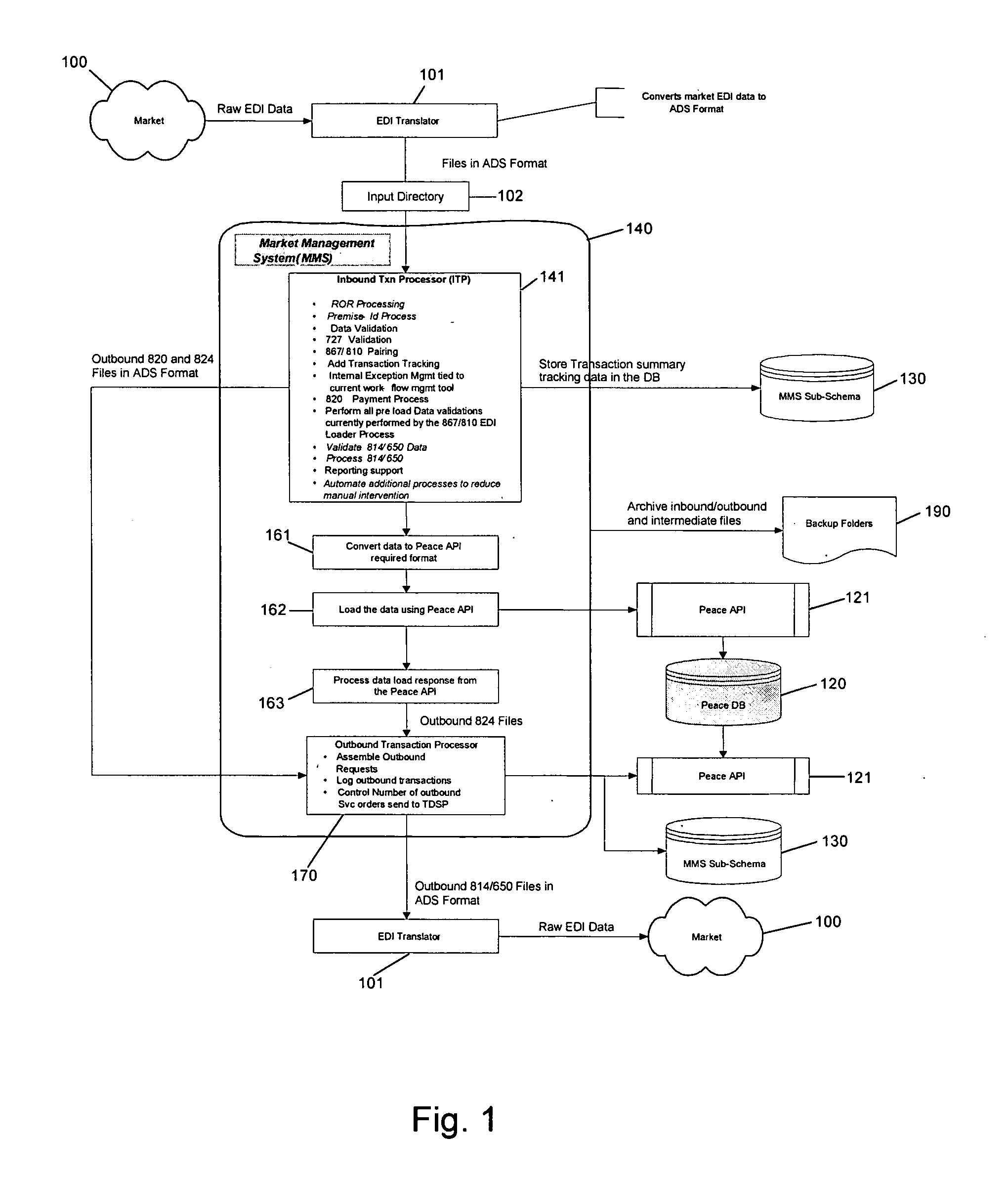Market management system
a market management and market technology, applied in the field of transaction processing, can solve the problems of no industry standard for the identification of customers or business transactions, and the failure of deregulation to deliver on its promise of customer choice and market efficiency, etc., to achieve customers' lower costs, eliminate obstacles and distractions, and level the playing field
- Summary
- Abstract
- Description
- Claims
- Application Information
AI Technical Summary
Benefits of technology
Problems solved by technology
Method used
Image
Examples
Embodiment Construction
[0046] A market management system as disclosed herein reduces the complexity of market transactions and facilitates easy access and sharing of information among providers—a solution that is unparalleled in the marketplace in functionality, service, and value. FIG. 1 illustrates one embodiment of the market management system (MMS) 140 that replaces the functionality of a customer's preexisting transaction processing, such that all transaction validation and tracking is performed by the MMS 140. Starting with data from the market 100, the data is translated by the EDI translator 101 into an MMS format, which is stored in input directory 102. The MMS format is independent of the data format used by the market 100. The formatted data is accessed by the MMS 140 from the input directory 102. The MMS 140, in this embodiment, is comprised of an inbound transaction processor 141, outbound transaction processor 170, a data converter 161 to convert the data from the MMS format to the format fo...
PUM
 Login to View More
Login to View More Abstract
Description
Claims
Application Information
 Login to View More
Login to View More - R&D
- Intellectual Property
- Life Sciences
- Materials
- Tech Scout
- Unparalleled Data Quality
- Higher Quality Content
- 60% Fewer Hallucinations
Browse by: Latest US Patents, China's latest patents, Technical Efficacy Thesaurus, Application Domain, Technology Topic, Popular Technical Reports.
© 2025 PatSnap. All rights reserved.Legal|Privacy policy|Modern Slavery Act Transparency Statement|Sitemap|About US| Contact US: help@patsnap.com



